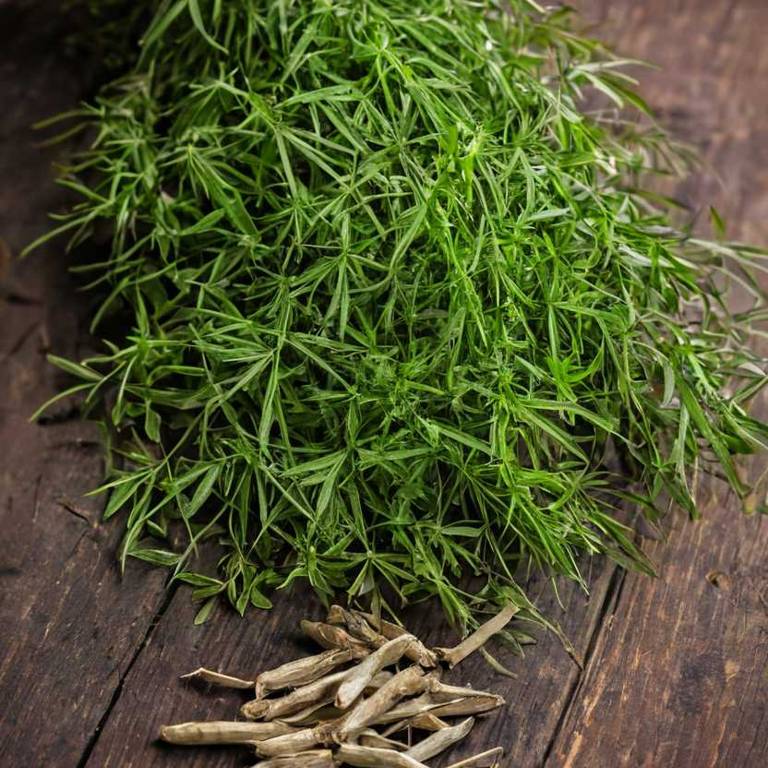10 Best Madhuca Longifolia Health Benefits

Madhuca longifolia, also known as the mahua tree, offers numerous health benefits due to its rich content of nutrients and bioactive compounds.
The leaves and flowers of this plant are traditionally used in Ayurveda for their anti-inflammatory, antioxidant, and antimicrobial properties. The seeds of Madhuca longifolia are a good source of oils and proteins, which can support heart health and improve digestion. The plant's extracts have been shown to help in managing diabetes by regulating blood sugar levels.
Additionally, the essential oils derived from Madhuca longifolia are used in aromatherapy to reduce stress and enhance mental well-being.
1. Boosts immune system
Madhuca longifolia boosts immune system through its rich content of bioactive compounds such as flavonoids, phenolic acids, and essential oils, which exhibit strong antioxidant and anti-inflammatory properties.
These compounds help neutralize free radicals and reduce oxidative stress, thereby supporting the body's natural defense mechanisms. Regular consumption of Madhuca longifolia can enhance the production of immune cells like lymphocytes and macrophages, which play a crucial role in fighting infections. Its traditional use in Ayurveda further supports its role in strengthening the immune system and promoting overall health.
As a result, incorporating Madhuca longifolia into one's diet may offer a natural and effective way to improve immune function and prevent illness.
2. Improves digestion
Madhuca longifolia improves digestion by promoting healthy gut function and enhancing the breakdown of food.
The plant contains various bioactive compounds that support the digestive system, including enzymes that aid in the digestion of fats and proteins. It also helps in reducing bloating and discomfort by regulating bowel movements and preventing digestive disorders. Regular consumption of Madhuca longifolia may contribute to better nutrient absorption and overall gastrointestinal health.
This makes it a valuable natural remedy for those seeking to improve their digestive wellness.
3. Reduces inflammation
Madhuca longifolia reduces inflammation by containing bioactive compounds that modulate the body's inflammatory response.
These compounds, such as flavonoids and phenolic acids, inhibit the production of pro-inflammatory cytokines. Studies have shown that extracts from Madhuca longifolia can alleviate symptoms associated with inflammatory conditions like arthritis and skin disorders. The anti-inflammatory effects are attributed to its antioxidant properties, which help neutralize free radicals.
Incorporating Madhuca longifolia into traditional or modern health practices may offer a natural approach to managing chronic inflammation.
4. Promotes skin health
Madhuca longifolia promotes skin health by providing essential nutrients that nourish and rejuvenate the skin.
Its rich content of antioxidants helps protect the skin from oxidative stress and damage caused by free radicals. The oil derived from Madhuca longifolia is known for its moisturizing properties, which help maintain skin hydration and elasticity. It also has anti-inflammatory effects that can soothe skin irritations and reduce redness.
Regular use of Madhuca longifolia products can contribute to a healthier, more radiant complexion.
5. Enhances heart health
Madhuca longifolia enhances heart health by reducing oxidative stress and inflammation, which are major contributors to cardiovascular diseases.
The plant contains bioactive compounds such as flavonoids and phenolic acids that help in lowering cholesterol levels and improving blood circulation. Regular consumption of Madhuca longifolia has been associated with a decreased risk of hypertension and atherosclerosis. Its antioxidant properties protect the heart muscle from damage caused by free radicals.
Overall, incorporating Madhuca longifolia into a balanced diet may support long-term cardiovascular wellness.
6. Aids in weight loss
Madhuca longifolia aids in weight loss by promoting metabolic efficiency and reducing appetite.
The plant contains bioactive compounds such as flavonoids and phenolic acids that help regulate blood sugar levels and enhance fat oxidation. Its traditional use in Ayurvedic medicine supports its role in managing obesity-related conditions. Studies suggest that incorporating Madhuca longifolia into a balanced diet may contribute to long-term weight management.
However, it should be used in conjunction with a healthy lifestyle for optimal results.
7. Supports brain function
Madhuca longifolia supports brain function by providing essential nutrients that enhance cognitive performance.
The plant contains bioactive compounds such as flavonoids and antioxidants, which help protect brain cells from oxidative stress and inflammation. These compounds may also improve blood flow to the brain, promoting better mental clarity and focus. Additionally, Madhuca longifolia has been traditionally used in Ayurvedic medicine to enhance memory and concentration.
Its neuroprotective properties make it a valuable natural supplement for maintaining optimal brain health.
8. Improves blood sugar
Madhuca longifolia improves blood sugar by enhancing insulin sensitivity and promoting glucose uptake in cells.
The plant contains bioactive compounds such as flavonoids and polyphenols, which have been shown to regulate blood glucose levels. Studies suggest that regular consumption of Madhuca longifolia may help in managing diabetes by reducing postprandial glucose spikes. Its traditional use in Ayurvedic medicine aligns with its modern scientific validation for blood sugar regulation.
This makes Madhuca longifolia a promising natural remedy for individuals seeking to support healthy glucose metabolism.
9. Reduces stress levels
Madhuca longifolia reduces stress levels by promoting relaxation and emotional balance through its adaptogenic properties.
The plant contains bioactive compounds such as flavonoids and sterols that help modulate the body's stress response. Regular use of Madhuca longifolia has been associated with lower cortisol levels, which is a key indicator of stress. It supports the nervous system, helping to calm the mind and improve mood.
This natural remedy is increasingly being recognized for its potential in managing chronic stress and enhancing overall well-being.
10. Promotes hair growth
Madhuca longifolia promotes hair growth by stimulating the scalp and improving blood circulation, which nourishes the hair follicles.
The essential oils derived from this plant contain compounds that help reduce hair fall and strengthen the hair shaft. Regular use of Madhuca longifolia-based products can enhance the overall health of the hair, leading to increased thickness and density. It is also believed to balance the scalp's pH, creating a favorable environment for hair growth.
Due to its natural properties, Madhuca longifolia is widely used in traditional Ayurvedic remedies for hair care.